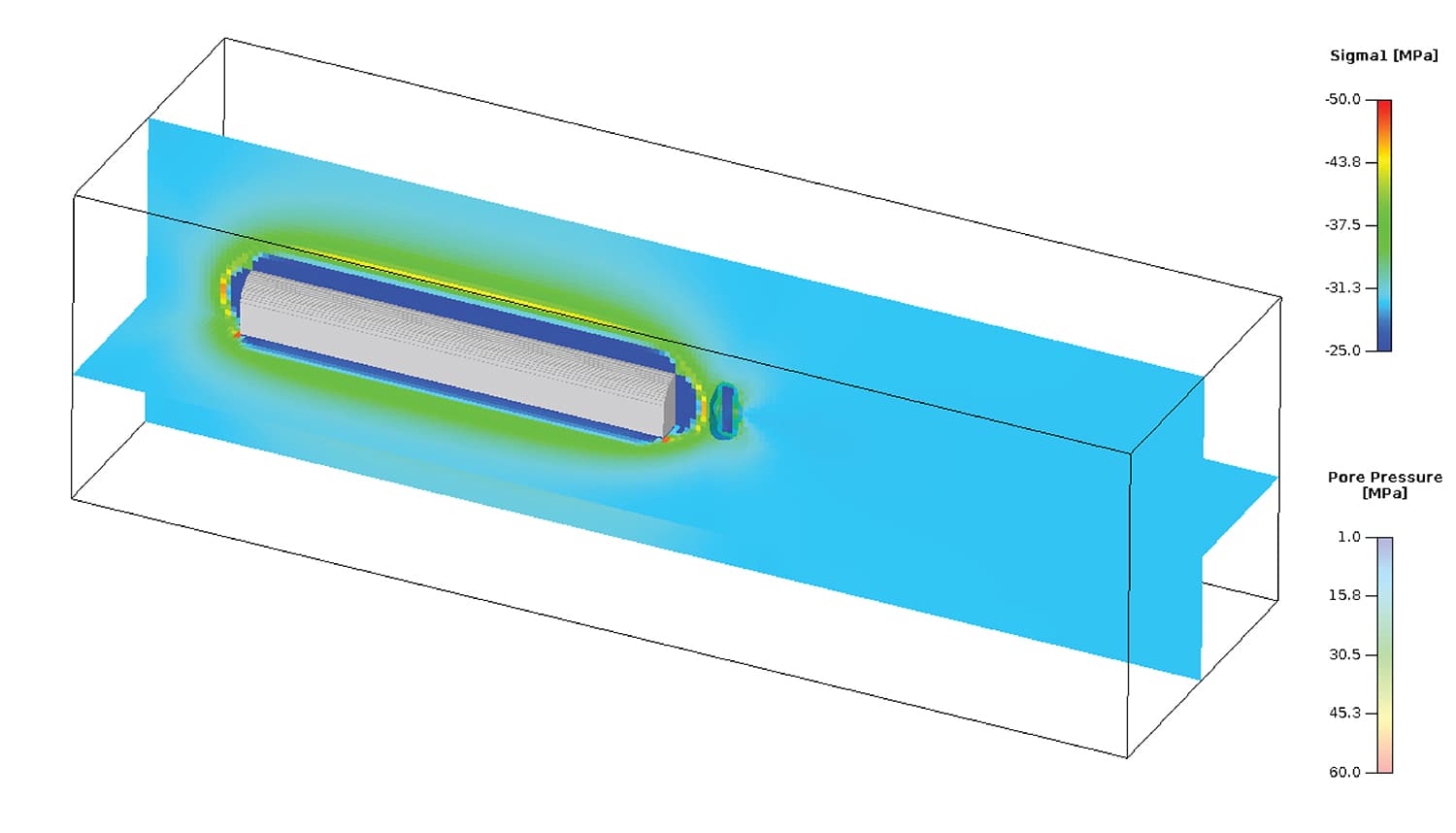Hydrofracturing

Hydrofracturing is a powerful method of preconditioning the rock mass for a more efficient and less hazardous mining. It leads to localized changes in the bulk physical properties of the rock mass which gives an over-all softening, significant reduction of the rigidity and a decrease in the cohesion of existing welded faults. Some expected effects of hydrofracturing are:
- a redistribution of the static stress towards a smearing of the stress concentrations near excavations and (geological) inhomogeneities in the rock mass
- an increase in the micro-seismicity related to the opening or shearing of new fractures
- a reduced probability for the occurrence of large seismic events in the fractured area rock due to the combined effect of the stress redistribution and the reduced cohesion of existing faults. As a result if rupture and slip are initiated, the process is likely to proceed under reduced driving load and in a less violent mode.
Modelling techniques of hydrofracturing for mining preconditioning are not well established. The proposed research project aims at developing a tool to model the static, the quasi-static aspects of hydrofracturing. The tool must reflect the constitutive relations for rock mass with fluid flow, pore pressure, material degradation and healing. The Material Point Method (MPM) is used as a core engine for simulating the interaction between solid and fluid due is its capability to simulate large deformation. It also allows for solving the behaviour of solid and fluid states using a single engine. The outcome of this research project will be a numerical tool for modelling the static and quasistatic aspects of the effect on the rock mass from hydrofracturing as well as a tool to extract seismicity from the numerical model so that it can be compared with observations from hydrofracking.
